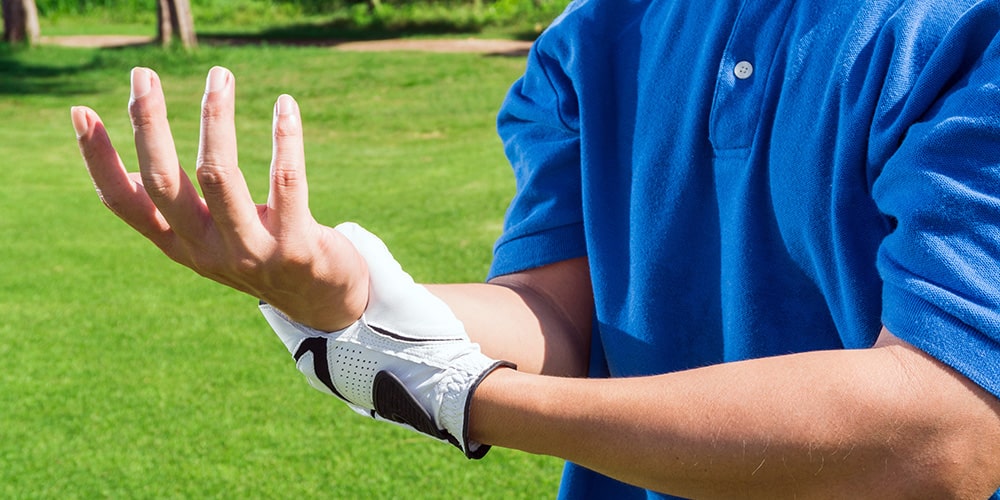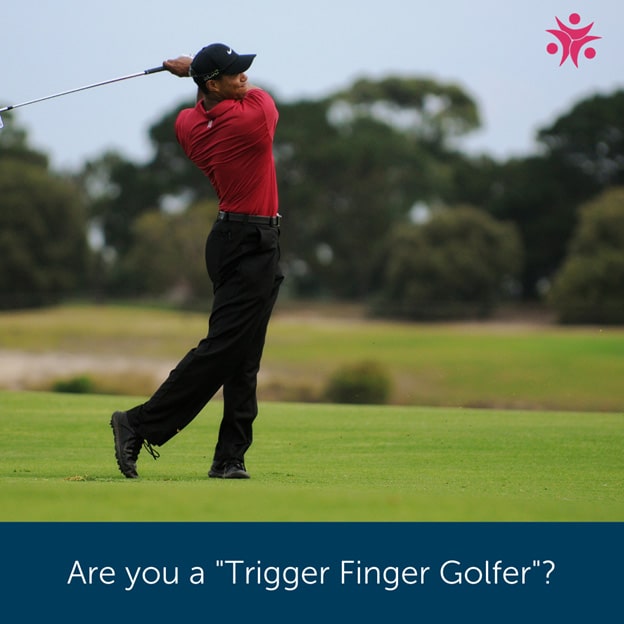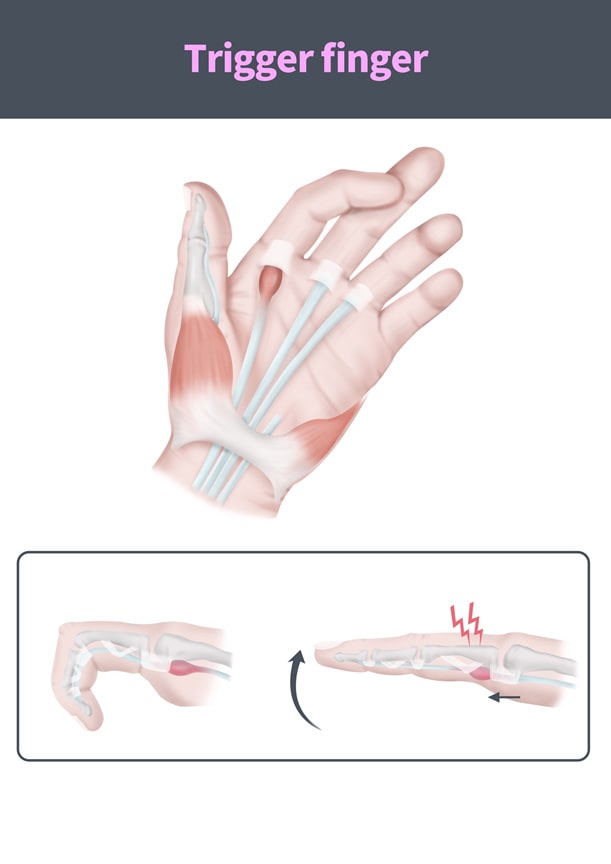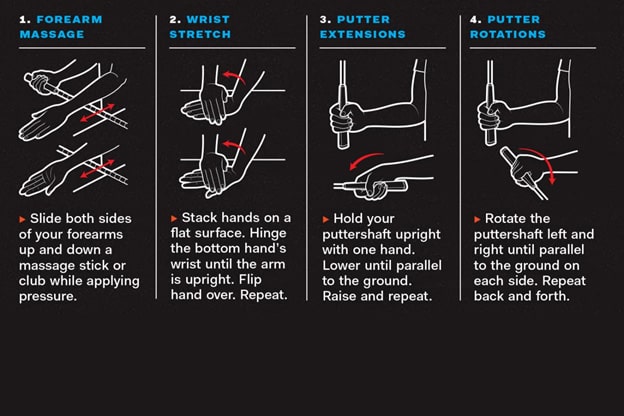
The Dreaded Golf Trigger Finger Injury - Put a Stop to It Now
Thursday, December 17, 2020
A golf trigger finger injury may seem like a tiny issue but it can ruin your golf game completely. Whether you're hoping to go professional or you simply love playing golf, don't let this pesky injury get the best of you.
Here, we're helping you put a stop to golf trigger finger. You'll learn more about the injury itself, its symptoms and causes, as well as ways to treat and prevent trigger finger. Read on.
What is Golf Trigger Finger?
Trigger finger injury is one of the most common injuries that golf players experience. It's a condition caused when the flexor tendon sheath that the tendons in your fingers run through is inflamed. The inflammation inhibits smooth movements during finger extension.
Trigger finger causes a finger, thumb, or multiple fingers to “lock-up” in a bent position, making a clicking or snapping sound.
Those suffering from this injury might also experience pain in the palm of their hand, trouble gripping, playing golf, and issues using their fingers in other ways.
Why are Golfers Affected by Trigger Finger?
Golfers experience trigger finger injury commonly due to the repeated gripping and swinging of the club. This repetitive motion without the proper precautions and treatments can lead to chronic golf trigger finger.
Golf requires a specific grip on the club and a repetitive swinging motion. It uses both the fine motor skills of your fingers to grip as well as gross motor skills to swing. Both can cause inflammation of the flexor tendon sheath.
Golf swings and holding the club too tightly puts a lot of pressure on your fingers. For these reasons, trigger finger is extremely common in golf.

What is the Role of Tendons?
Let's backtrack for a moment and visit the role of tendons to better understand golf trigger injury as well as its causes, symptoms, and treatments.
Tendons are the link that connects muscle to bone. These thick bands help bones to move when the muscles surrounding them contract. The tendons found in your hand run to the end of your fingers and up into your forearm.
Acting as a pulley system, these tendons link to bones through ligaments. This pulley action creates a sheath around the bone allowing the tendons to move through smoothly.
Therefore, trigger finger occurs when this pulley-like sheath becomes inflamed from strain or overuse.
What Causes Trigger Finger?
Trigger finger is caused by overuse of the hands through repetitive gripping or pinching. Doing so causes damage or inflammation to the tendon sheath in the hand that usually allows your finger tendons to glide smoothly.
Individuals over the age of 40 and women are also more susceptible to trigger finger injury.
Perhaps this is due to deteriorating joints in older individuals or due to the fact that women typically have smaller hands, requiring a tighter grip.
However, trigger finger's occurrence is more closely related to activities performed such as golf.
Additionally, ignoring the early warning signs of golf trigger finger makes symptoms far worse. If left untreated, it's possible that your affected finger may never fully straighten again. It can also be caused or exacerbated by a previous hand injury.

Trigger Finger Symptoms
Trigger finger causes painful locking and snapping of the finger or thumb and difficulty moving your finger, thumb, or multiple fingers.
The most common symptoms of golf trigger finger include:
- Difficulty bending or straightening the affected finger
- Small lump at the base of the affected finger
- Stiffness
- Pain in fingers or hand
- Clicking or snapping noises when moving the affected finger
How to Prevent Trigger Finger
The good news about trigger finger injury is that there are ways to prevent it.
By adapting your golf technique and resting when you start to feel the onset of trigger finger, you can successfully prevent its dreaded symptoms.
A few other ways to prevent golf trigger finger include:
- Changing your grips or wearing gloves
- Adjusting your grip technique
- Checking your divot holes
- Stretching and resting your hands and fingers
Change your grips or wear a glove
Many amateur golfers don't realise that you can change the actual grip that comes with a set of clubs. Most golf club grips come in four diameters to better fit the size of your hands. You can also use tape to adjust the size of your grips or wear golfing gloves to essentially increase the size of your hands.
By taking these measures, you're less likely to grip too tightly and cause trigger finger.
Adjust your grip technique.
In addition to finding a grip that fits your hand, you may also need to adjust your actual grip technique. The way your grip the golf club matters. Gripping the club too high across your palm is a weaker position and can cause injury over time.
Focus your grip in your last three fingers and work with a coach to perfect your golfing form.
Check your divot holes.
After a swing, pay attention to the divot holes that were made in the grass. These divots can be indicative of poor technique.
If you're creating a deep divot to the left of the ball, this shows that your swing is harder on your wrists and forearms than it needs to be. This added strain, over time, can cause golf trigger injury as the tendon sheath becomes overused and inflamed.
Stretch and rest your fingers before and after playing golf.
As with any sport, golfing puts a lot of tension on your muscles, tendons, and ligaments. Therefore, it's imperative to stretch before, during, and after a game of golf and rest your muscles to help them recover.
Just because golf isn't a game that leaves one huffing and puffing, it's just as strenuous and requires adequate physical care. Especially if you notice the early symptoms of golf trigger finger, be sure to take a few days off.
How to Treat Trigger Finger
While most of the symptoms caused by golf trigger injury go away after a few days of rest, persistent pain and locking require some form of treatment.
Trigger finger treatment includes:
- Rest
- Anti-inflammatory medications
- Physiotherapy
- Cortisone
- Surgery
Get in contact with your nearest Physio Inq clinic or book a mobile physio that will come to you. They'll work with you on the best golf trigger finger exercises to help you find relief.
Golf Trigger Injury Exercises
During your physiotherapy sessions, you'll learn exercises to stretch and activate the muscles and tendons in your fingers, hand, and forearms. You can do these exercises before, during, and after a game of golf to help prevent trigger finger.
- Forearm Massage
- Wrist Stretch
- Putter Extension
- Putter Rotations

Source: https://www.golfdigest.com/story/dont-let-this-common-injury-sideline-you
For personalised physical care and more golf trigger injury exercise, contact one of our expert physiotherapists at Physio Inq. Come see us in one of our convenient clinics or allow our mobile physio services to come to you.
This article was originally written by Jonathan Moody from Physio Inq

